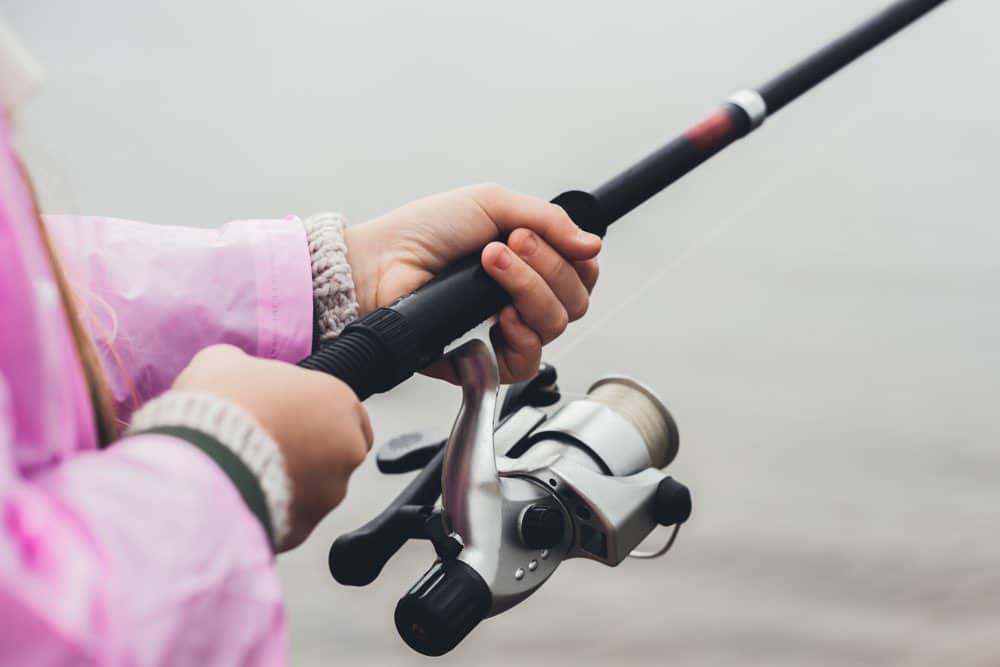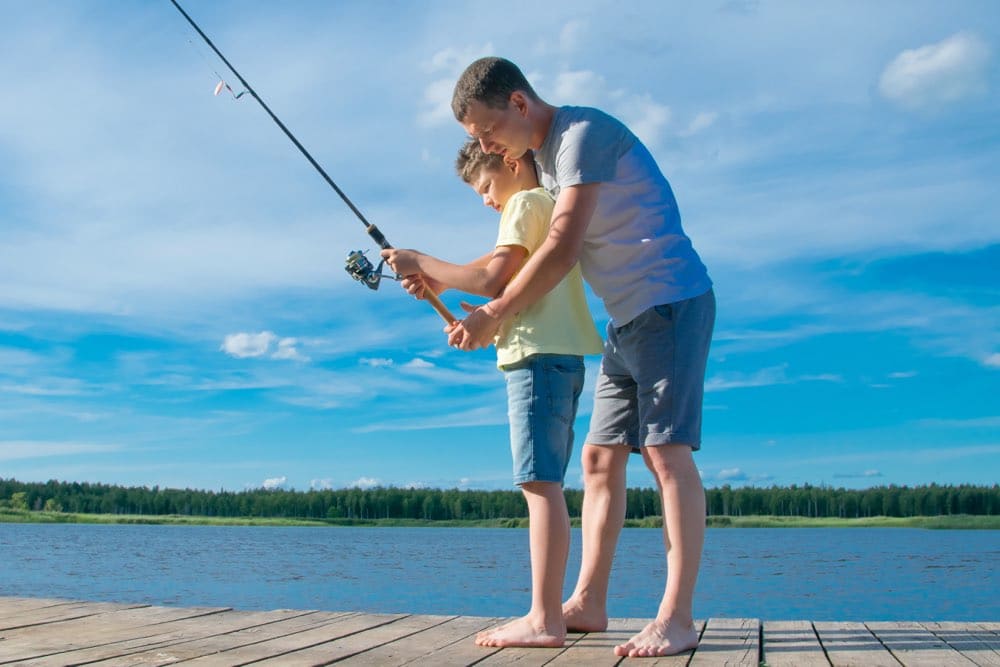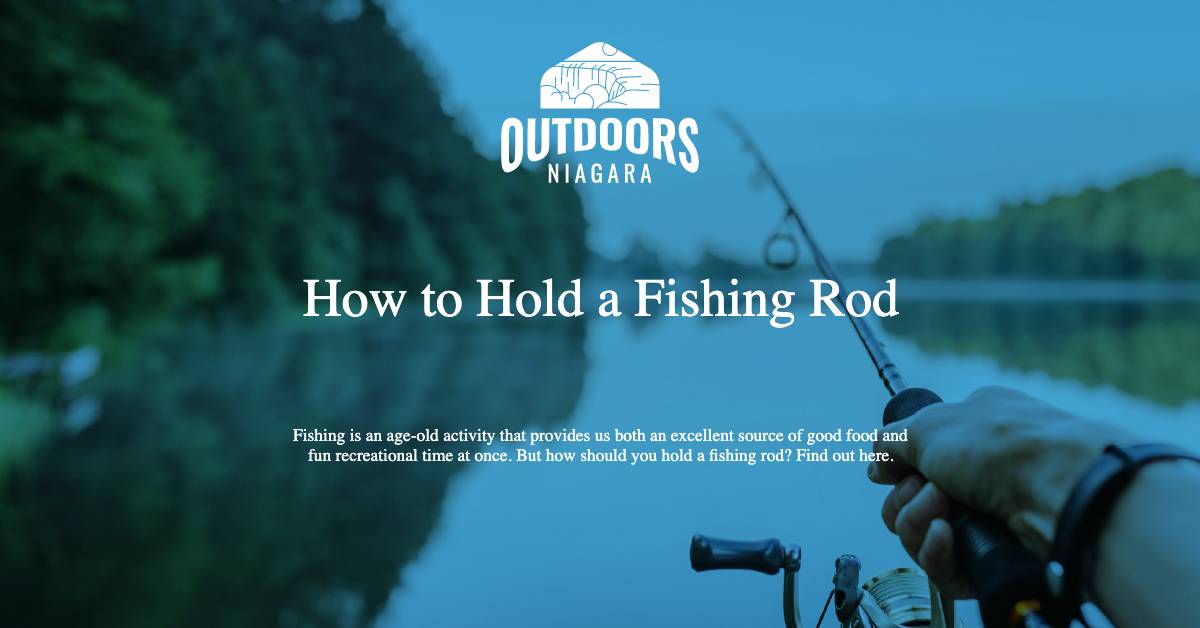Fishing is an age-old activity that provides both an excellent source of good food and fun recreational time at once.
There’s quite a bit of nuance to becoming a good fisherperson, and there are some noticeable differences between an experienced veteran and the new kid on the block.
One of the primary reasons people lose their fish is that they’re a novice who doesn’t know how to hold their rod and reel in their prize correctly.
How you hold your rod is very important, and it isn’t necessarily naturally intuitive.
We’re here to give you some knowledge and tips on how you can improve your form so you can better hold your rod and finally start reeling in the fish you deserve.
Contents
The Major Components of a Rod
Before we go into how best to hold a rod, we’ll go over some terminology to get you better acquainted with your most important piece of equipment regarding the hobby and profession.
Butt Cap
Typically made with rubber, aluminum, plastic, cork, or wood, you’ll find the butt cap over the rod and around the handle.
It’s designed to add another layer of protection, especially around the bottom of the handle, the middle of the rod, and the end.
Ferrule
A simple but crucial component to every rod, the ferrule is the component that connects the two parts of the rod.
If the ferrule is damaged or destroyed in some way, the rod is broken and effectively useless.
Handle
Probably the most important part of the fishing rod for this article, the handle is where you’ll be placing your hands when holding your rod.
Typically made from a softer material such as foam or cork, handles come in various styles, shapes, and sizes, depending on the manufacturer.
The length of the handle is one of the more important and deciding factors when deciding on a rod, as it plays a significant role in how effectively you can control the rod when reeling.
The Seat of the Reel
The reel seat is designed to hold the reel next to the handle to minimize the distance you have to travel when switching between holding and reeling.
How well you make use of this design and get that added efficiency and advantage is determined by various factors, such as how you hold the rod and which mechanism was used to install the reel.
Different people use different mechanisms, such as a hooding mechanism to screw the rod’s reel foot.

How to Hold an Open Face Reel
There are a few steps that you’ll have to get acquainted with before you can comfortably and adequately hold an open-face reel spinning fishing rod.
Step One: Find The Center of Mass
The first thing you’ll need to do is find the center of mass for your rod’s handle.
This gives us a guideline on where we place our index finger when holding the rod.
Step Two: Positioning Your Fingers
With the most straightforward step out of the way, you’ll now have to position your fingers and grip the rod.
With an open face reel, you’ll want to grasp your rod in hand and wrap your fingers around the handle so that the seat of the reel attaches to the rod between your middle finger and ring finger.
Step Three: Casting
Now that you have the rod in your grasp, you can prepare yourself to cast.
First, open the bill bail, then hold the line with your index finger.
Prepare yourself to cast and then let loose, letting go of the line as you cast.
Make sure to close the bill bail after you’ve cast to save your line from any unnecessary damage.
How to Hold a Baitcaster
The beauty of a spinning rod is that you never have to switch hands when casting and reeling.
It can all be done with one hand.
Baitcasters are a bit more nuanced and require more coordination, but you can quickly get it down pat with a little bit of practice.
Step One: Placing Your Dominant Hand
You’ll notice that, on a baitcaster, the reel is positioned on top of the ride.
This makes holding it a bit more awkward than an open-face spinning rod, but it’s easy with some know-how.
You’ll want to hold the rod’s handle with your dominant hand so that the webbing between your thumb and pointer finger slides under the baitcaster.
Step Two: Holding the Rod
Once your dominant hand is in place, place your other hand below it.
With both your hands on the rod this way, you will have enough leverage and control to cast and switch positions with your hands without fumbling properly.
Step Three: Using Your Thumb
Your thumb should be in a position to nicely sit on the spool so that you can click the bail release and catch and hold the spool in place.
Try experimenting with finding the best positioning so that you can comfortably hit the release and hold the spool without feeling any discomfort.
At this point, you can do your cast, but remember to keep your thumb on the spool.
Otherwise, the entire spool might become undone, and you’ll end up with a big mess to clean up.
Once you’ve cast the line and the lure has hit the water, you will switch hands, holding the rod in your offhand in the same manner as you did in your dominant hand.
This frees up your dominant hand to reel the lower end, hook the fish, and land it.
In essence, you are casting with the rod in your dominant hand and reeling with the rod in your other hand.
Which Hand Should You Use?
Of course, whichever hand you are dominant with will slightly impact how you hold your rod, so our first step will be describing how holding your fishing rod changes based on whether you are left- or right-handed.
Additionally, the type of fishing rod you use will also decide which hand you use and how you hold them.
Spinning rods are pretty simple to use.
You’ll be using your dominant hand entirely and you won’t need to switch your hand off your grip to do so.
As we explained above, you’ll be doing some switching with baitcasting rods.
Our advice is to practice what feels most comfortable to you, as being able to comfortably and quickly switch hands once you’ve cast is paramount to mastering how to fish with a baitcaster.
Reel Up Or Down?
In general, you should have a reel up position for shorter rods, or where spool grip is not an issue, as with fixed spool rods.
The reel should have a downward motion for long multiplier rods, or for rods that are extremely powerful – too powerful at full length.

FAQs
Which hand do you hold a fishing rod in?
This is a very common question when it comes to the basics of fishing.
The hand that you hold your fishing rod in will depend on which of your hands is dominant.
It’s important to make sure that you are holding your rod in the correct hand so that you can fish as effectively as possible.
If you are teaching your kid how to fish, it doesn’t really matter which hand they hold it in, since they will still be figuring out which of their hands is the dominant hand.
However, if you are older, you’ll find an experienced fisherman will use their right hand when they use a spinning reel.
On the other hand (pun intended) they’ll use their right hands for baitcasters while the left works the fishing reel.
The hand that you hold your fishing rod in will also depend on the type of rod, since there are left-handed and right-handed rods.
Can I hold a fishing rod left-handed?
If you are left-handed or want your left-handed friend to use one of your spinning reels, you’ll likely want to know how you can switch a right-handed reel to a left-handed reel.
It doesn’t matter which hand is your dominant hand if you prefer to hold your rod and spinning reel in your right hand while reeling with your left, or if you are left-handed and would prefer to do the opposite.
No matter which side is more comfortable for you, it will only take a couple of minutes to learn how to switch reels for a more enjoyable fishing experience.
Is there a wrong way to hold a fishing rod?
As a matter of fact, there is. Whether you are retrieving your lind or waiting on a bite, your left hand should always be in front of the reel, no matter what.
If you are not holding your fishing rod in this way, you are doing it wrong!
Does the reel go on the top or bottom?
In general, spincast reels are mounted on the top of the rod handle when in the proper position.
However, there are a few models of rod out there that have the reels mounted on the bottom.
It all depends on the type of rod you are using. Some ice fishing rods have the reel mounted on the top







